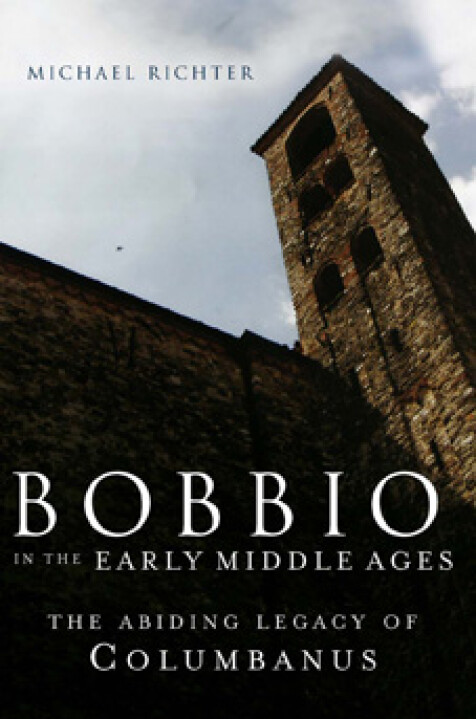Bobbio in the early middle ages
The abiding legacy of Columbanus
Michael Richter
'Every scholar who embarks on a study of the Old Irish language will, at an early stage, encounter Old Irish glosses which provide the core material of the language. The most important of these glosses come from Würzburg (Wb), Milan (Ml) and St Gallen (Sg). The Milan glosses came to the Biblioteca Ambrosiana from Bobbio during the Renaissance. While they originated in Ireland, the fact that the manuscript containing them eventually came to Bobbio is one of the symptoms of the Irish dimension of this monastery ... Professor Michael Richter looks at the monastery of Bobbio during a period of around three centuries, from the foundation in the early seventh to the time of a serious crisis in the early tenth century in his latest volume Bobbio in the Early Middle Ages and highlights how the early development of Bobbio cannot be called anything but spectacular and how the success of this monastery must not be taken for granted', SPOLIA: Journal of Medieval Studies.
‘This book is the first full study of the institution in the crucial early centuries of its existence. Although in northern Italy, Bobbio holds an important place in Irish cultural history and houses a significant collection of Irish manuscripts, many of them illustrated … Drawing on original source, this is an important study of one of the most celebrated Irish foundations on the continent', Books Ireland (September 2008).
‘Richter … has compiled a history of the monastery of Bobbio that surveys and summarizes the surviving evidence from the time of its founding by the Irish ascetic Columbus in c.613 until the translation of his relics 300 years later, from Pavia back to the monastery. The primary sources on which Richter bases his history are described; many are included in full, in their original Latin. A group of b&w plates and several maps are included', Reference & Research Book News (November 2008)
‘… useful to scholars interested in the Italian monastery of Bobbio, the Irish monk Columbanus, and/or Celtic monasticism … Scholars will likely appreciate his list of manuscripts and a thirteen-page bibliography of sources in several languages; several black and white plates and maps enhance the text', Marielle Frigge OSB, ABR (December 2009).
‘This book is an important contribution to the study of the influence of the Irish outside Ireland in the early medieval period – a theme upon which Richter has written much in the past – and will be essential reading for all who want to come to grips with the thought of the earliest extant Irish author. It gathers and presents in a comprehensible form a wide range of disparate scholarship, and for this we are in Richter’s debt … this is a book that merits a place on the shelf of anyone interested in early medieval Ireland, and its links to the continent', Thomas O’Loughlin, Studia Hibernica (2008/9)
‘In spite of Bobbio’s reputation as the “Monte Cassino of the North” no comprehensive study has been done before Richter’s. His particular aim is to show that the monastery’s Irish connections lasted considerably past the time of its founder, St. Columbanus, and he is able to marshal evidence to support that position from history, palaeography, philology, and archaeology as he presents an orderly picture of the development of the monastery from the seventh through the end of the ninth century', Daniel F. Melia, The Journal of Ecclesiastical History (2009).
‘The study focuses on the first three centuries of the monastery’s history covering the Lombard period, the Carolingian century and the beginnings of post-Carolingian times. Richter presents us with the Latin text of the four earliest legal documents attesting to the foundation of Bobbio monastery … Richter has produced a very scholarly work seeking to establish the Irish dimension of Bobbio both in the time of Columbanus and also in its later history. He bases his arguments on painstaking analyses of the manuscript evidence … a full list of manuscripts together with a detailed bibliography make this book a most useful starting point for future scholarship on the Columbanian monasteries of Europe', David Kelly OSA, Óenach: reviews of the FMRSI (December 2010).
‘Of all the Irish monasteries founded on the Continent during the Early Middle Ages, undoubtedly the most important and influential was Bobbio, near Piacenza in NW Italy, founded by Columbanus in 612. Although Columbanus was destined to spend only his last three years there, Bobbio’s fame lived on long after him, and still looms large today … this new book by Michael Richter is the first lengthy study of the monastery in the English language', Dáibhí Ó Crónín, Medieval Archaeology (Spring 2011).

